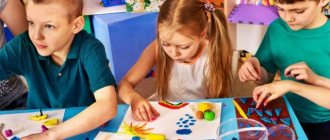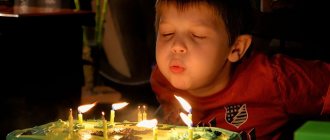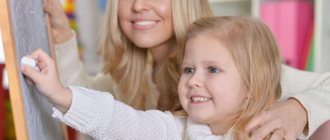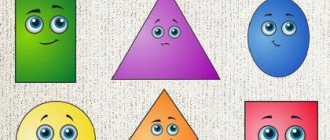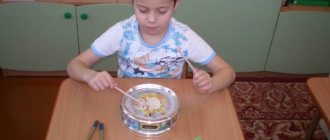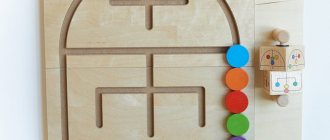Methods for correcting dysarthria accompanied by salivation in children with central nervous system lesions
Penkova Ekaterina Petrovna speech therapist of the State Autonomous Institution Scientific and Practical Center of MSR named after. L.I. Shvetsova
At the moment, along with the main problems of children with disabilities, we can also highlight the problem of dysarthria, accompanied by salivation.
The elimination of dysarthria must be approached comprehensively, combining different types of interventions: speech therapy, physiotherapy, physical therapy, training of the articulatory apparatus, massage, medications that affect the central nervous system.
Today we will look at traditional and non-traditional techniques for one of the characteristic symptoms of dysarthria - hypersalivation, that is, excessive salivation. The problem of eliminating increased salivation is too complex and cannot be solved only through exercises in speech therapy classes.
1. Speech therapy massage.
Speech therapy massage begins with a general facial massage, then moves on to a lip massage and then carries out manipulations in the child’s oral cavity. It should be borne in mind that not all children react positively to manipulations in the mouth, since the mouth area is very sensitive. The child should receive only pleasant sensations during speech therapy massage. Otherwise, the tone and hypersensitivity of the oral area increases. Inept active actions can lead to revitalization of the reflex sphere, in particular, the biting or gag reflexes. Carrying out facial massage contributes not only to the formation of facial means of communication, but also to the development of the oral sphere, which is necessary for the child’s normal nutrition and subsequent speech development.
The following types of massage can be used: - tonic or relaxing (differentiated) massage, which is based on classical massage techniques; — massage of biologically active points (BAP) — massage using special devices or “probe” massage according to E. V. Novikova.
2. Breathing development
The development of breathing is one of the first and very important stages of correctional influence on children - speech pathologists, regardless of the type of their speech defect. The habit of breathing through the mouth has a very harmful effect on the human body, leading to diseases of the thyroid gland, tonsils, and the entire respiratory system. Nasal breathing protects the throat and lungs from cold air and dust, ventilates the lungs well, the cavity of the middle ear, which communicates with the nasopharynx, has a beneficial effect on the blood vessels of the brain.
Children with excessive salivation do not have a feeling of the force of inhalation and exhalation.
There are certain techniques aimed at restoring this important function: differentiation of oral and nasal exhalation in children with rhinolalia A.G. Ippolitova; relieving tension from the muscles of the whole body and organs of articulation in children N.A. Rozhdestvenskaya, E.L. Pellinger; healing and healing techniques of K.P. Buteyko, A.N. Strelnikova; figurative gymnastics according to M. Norbekov, a method of self-control using biofeedback devices. The essence of these techniques is the conscious control of all phases of the act of breathing through training the respiratory muscles and regulating the functioning of the respiratory center.
3. Artificial local hyperthermia
The ILC method is used to reduce spasticity of the muscles of the articulatory apparatus, hyperkinesis of the lingual and facial muscles. The method consists of contrast-thermal exposure to low-temperature (crushed ice in a napkin or very cold water) and high-temperature (hot water or herbal infusion) agents. Hypothermia (cryomassage) and hyperthermia (thermal massage) can be used alternately or selectively. In the spastic form of dysarthria, it is prescribed to reduce the tone and tension of the muscles of the speech apparatus, to relieve hyperkinesis in the facial-articulatory muscles.
This technique is easy to perform: - crushed ice in a cotton package (according to the size of the child’s face) is applied alternately to the muscles of the speech motor apparatus, the orbicularis oris muscle, the zygomatic major muscle, the laughter muscle, and the chin area. The duration of exposure to ice application is from 2 to 7 minutes. Simultaneous application to each zone - 30 seconds. The course of exposure is 15-20 daily sessions. Immediately after the procedure, a speech therapy session is conducted.
4. Myostimulation is a targeted effect of electrical impulses on certain groups of muscles and nerves.
The result of the procedures is:
- increased blood circulation and metabolic processes in the corresponding part of the body;
-stimulation of muscles, as a result of which their gradual strengthening occurs;
- normalization of processes of excitation and inhibition of the peripheral parts of the nervous system.
For the procedure, a special device for myostimulation is used. It is a generator of electrical pulses with adjustable amplitude and frequency of the signal. Depending on the complexity and purpose, the device contains a different number of preset operating modes (programs), which provide for changing: the duration of the session; - current strength (for facial muscles it is 3-5 milliamps); -pulse frequency, which is 15-150 hertz; -pulse duration (1-100 milliseconds
It is not recommended to carry out the procedure in the following cases: - oncological diseases, - malignant neoplasms, - epilepsy, - acute purulent inflammatory processes, - heart diseases
5. Taping of articulatory muscles is a new direction in the correction of such disorders as:
- salivation (with various types of hypersalivation),
- slightly open mouth (often combined with weakened chewing),
— violation of diction (pronunciation of labial sounds is difficult).
Tapes are cotton elastic bands that are capable of permeating moisture and air and are close to human skin in terms of stretchability. The tapes are coated with an acrylic thermoactive coating, which allows you to achieve the effect of warming up the tissues on which the tape is glued.
The mechanism of the effect of taping on speech muscles:
- “lifting” effect. The tape lifts the skin and fascia of paretic muscles and thereby improves microcirculation and lymph flow in them - a necessary condition for the normal functioning of muscle fibers.
-receptor irritation effect. The tape affects various receptors in the skin and muscles over which it was glued, causing the brain to pay attention to the muscles that are not working.
- the effect of “discomfortable tension”. The tape forms an unusual arrangement of articulation organs (lips, lower jaw, etc.). This leads to a desire to move them, to “return” them to their place and creates a new physiological stereotype of movement.
Tapes are glued to the neck in a special way, including in the projection of the hyoid bone, to which the muscles involved in the act of swallowing are attached. This causes an automatic swallowing reflex and the entire time the tape is pasted, the child will periodically swallow saliva - that is, train the muscles involved in swallowing. Taping should be carried out if the child cannot pronounce labial sounds (B, P, V, F, M) due to disruption of the innervation of the orbicularis oris muscle.
6. Articulatory and facial gymnastics exercises that help reduce hypersalivation.
1. Imitation of yawning, chewing, swallowing with the head thrown back. (Chewing and swallowing is recommended to be done with the mouth closed).
2. “Chicks” (“Window”). Open your mouth wide and hold it in this position for 3-5 seconds. Close your mouth. When performing the exercise, the tongue lies calmly at the bottom of the mouth. Keep your mouth open for 5-10 seconds.
3. "Mustache". Hold a strip of paper, cocktail tubes of different diameters, a wooden or metal spatula, and medicine bottles of different diameters with your lips.
4. “The fat one is the skinny one.” Puffing up both cheeks at the same time. Retraction of the cheeks into the oral cavity with the mouth open and lips closed.
5. "Balls". Inflate your cheeks alternately 4-5 times. 6. “Exercise for yogis” - the mouth is open, the child rotates his tongue in front of the mouth, then the speech therapist invites him to swallow saliva.
Muscle activation using honey or bread ball.
1. Place a bread ball (crushed vitamins, drop 1-2 drops of syrup from a pipette) on the tip of your tongue, and forcefully make swallowing movements.
2. Place a drop of honey on the tip of your tongue. Do the “Clock” exercise or move your tongue back and forth.
Pronouncing vowels: a, e, and on a hard attack to activate the muscles of the soft palate.
- a a a; uh uh; and and and;
- ae, ae, ae; ea, ea, ea; ai, ai, ai; hey, hey, hey;
- aei, aei, aei.
People around you should constantly monitor the position of the child's mouth and remind him to keep his mouth closed when he is not eating or talking.
It is important to form in the child a differentiated sensation of dry and wet chin.
Effectively use gargling, mouthwash, mineral water, liquid jelly, kefir, thick jelly, imitate chewing, swallow saliva with effort.
Practical experience shows that a competent combination of special techniques for children with salivation allows one to normalize the muscles of the articulatory apparatus, develop full-fledged movements necessary for the correct pronunciation of speech sounds, and most importantly, reduce the time required to produce sounds.
Features of breathing disorders in preschool children with an erased form of dysarthria
The article explains the relevance of studying the problem of breathing disorders and their correction in children with dysarthria. The results of studying the state of speech breathing in preschool children with dysarthria are presented.
Key words: educational environment, disorder, dysarthria, speech therapy, breathing, correction, diagnosis.
Today, one of the problems of modern speech therapy is the problem of dysarthria in preschool children. Such speech impairment in preschoolers is a pressing problem due to the fact that correction of this disorder is difficult. This is due to the fact that breathing is an important life support function for humans. For this reason, breathing correction is necessary in children with similar speech disorders.
Dysarthria is a speech disorder caused by organic damage to the nervous system. Dysarthria in a child is formed due to insufficient supply of nerve endings to the organs of the speech apparatus. The connection between the speech organs and the central nervous system deteriorates, and the child experiences difficulty in correctly pronouncing sounds.
Most often, children with speech disorders have various breathing disorders. Many authors in their methods attach great importance to the development of this indicator. Speech breathing is the process of breathing during speech. Namely, the ability to take a short, deep breath while speaking and gradually use the air to logically complete a sentence or phrase. Properly organized speech breathing allows the vocal apparatus to work without excessive tension, using logical stops to relax the ligaments, maintains fluency of speech, allows the use of the whole variety of intonation means of expressiveness, observe pauses, etc. With dysarthria, speech breathing is impaired due to the pathology of the innervation of the respiratory muscles [3].
D.K. Wilson, A.P. studied the characteristics of speech breathing as a special system of psychomotor reactions. Zilber, A.G. Khripkova. Issues of speech exhalation were dealt with by M.F. Fomicheva, A.E. Khvattsev, O.V. Pravdina. The leading role of speech breathing for the formation of full sound pronunciation is noted by A.G. Ippolitov [1].
Breathing is part of a complex functional speech system. The peripheral organs of hearing, breathing, voice, and articulation are inextricably linked and interact with each other at different levels under the control of the central nervous system. Each of the speech organs has its own function. According to A.R. Luria, a violation of one of them will affect the activities of other organs. This determines the relevance of the fact that in speech therapy practice, important importance is given to the production of sound pronunciation. When developing various techniques, the authors attach great importance to voice delivery and voice guidance.
To conduct the practical part of the study, the preschool institution MBDOU kindergarten No. 45 in Orel was selected. The study was conducted in a group of preschoolers aged 5-6 years. The subjects were 10 children of senior preschool age with dysarthria.
When conducting the study, elements of A.I.’s methodology were used. Maksakova.
The purpose of the technique: to determine the type of breathing, the purposefulness and strength of the air stream, the duration of non-speech exhalation, the characteristics of phonation breathing, methods for studying external respiration.
The chosen method allows us to determine important characteristics of speech breathing in children: the force of non-speech exhalation, type of breathing, rhythm of inhalation and exhalation, volume of speech breathing. Also, the positive aspects of this technique are its simplicity, relatively short time spent on implementation, and a convenient game form that interests children.
The study showed the fact that in case of insufficient speech breathing in children, the volume of speech and its clarity suffer. Insufficient speech breathing affects the volume and force of exhalation. Also, in children with dysarthria, there is insufficient differentiation of oral and nasal inhalation and exhalation, and unclear diction.
Based on the results of the experiment, the main results of the observations were summed up:
- Physiological respiration. In children taking the drug during the experiment, spasticity of the respiratory muscles during breathing and associated convulsions of inhalation and exhalation were observed. The differentiation of oral and nasal inhalation and exhalation in the observed children is rather weak.
- The onset of exhalation in the observed children occurs in an accelerated manner. That is, we can say that the onset of the exhalation phase is accelerated by these children, which leads to the appearance of convulsions of inhalation and exhalation and weakening of speech exhalation. As a result, these children exhibit poor directionality of the air stream.
- In the process of pronouncing phrases by these children, they experience phonation (voiced) exhalation, which leads to the breaking of phrases and their unevenness during pronunciation. This reduces the duration of the phrase.
- The study showed that these children have a disorder of coordination between breathing, articulation and phonation, and excessive air intake during the inhalation phase. In addition to this, it is worth noting that when these children pronounce phrases, pronunciation is carried out on exhalation and speech exhalation is weakened in this case.
Children who have been diagnosed with a speech disorder need breathing training. It is necessary to develop their respiratory functions. All exercises for training and correction of breathing in children with dysarthria are aimed at normalizing the breathing rhythm and increasing the strength of the respiratory muscles. The author's methods for breathing correction and training are aimed at improving breathing functions in children. By improving respiratory function, the respiratory system becomes healthier. Thanks to this, the overall level of health of the child increases, which subsequently, of course, affects speech breathing.
Such breathing correction exercises must be carried out systematically. This period will last quite a long time. Subsequently, this will improve the motor skills of the articular apparatus and develop articulatory movements. The job of a speech therapist is to overcome monotony and disturbances in speech rate in a child with dysarthria. Subject to successful work, full-fledged phonemic perception develops.
There are quite a large number of techniques aimed at correcting speech breathing in dysarthria. In the process of their use, problems such as normalizing the breathing rhythm, increasing endurance and strength of the respiratory muscles, and improving air conduction of the pulmonary system are solved. During the performance of specially selected exercises, breathing in general is optimized, the overall level of the child’s health increases, which has a positive effect on speech development [2].
Most often, in speech therapy work, breathing exercises by A.N. are used to correct breathing in children with dysarthria. Strelnikova. This technique was formed in the last century. A similar technique was developed by the author in order to restore the singing voice, since Strelnikova was a singer. But given the practical significance of this technique and its effectiveness, it has become very often used in the correction of various breathing disorders. In particular, this technique is very effective in correcting breathing in children with dysarthria.
Carrying out his activities to correct breathing in children with dysarthria, the speech therapist selects individual programs for the correction and development of breathing. Work can be carried out both individually and through individual and group classes. The speech therapist uses generally accepted methods, makes any changes to existing exercises, and selects individual development methods. The implementation of breathing correction activities is carried out through the organization of a developing subject-spatial environment in the group.
If activities to correct breathing in children with dysarthria are successful, subsequently it is necessary to constantly monitor and monitor the correct breathing of these children.
That is why it is necessary to carry out periodically repeated exercises in order to consolidate the results obtained. Work to correct breathing in children with dysarthria should be carried out on the basis of a preschool institution together with teachers who carry out the educational function of these children.
Literature:
- Voroshnina L.V. Development of speech and communication of children who do not attend preschool: practical work. manual for academic bachelor's degree [Text]. / L.V. Voroshnina. // 2nd ed. - M.: Yurayt Publishing House, 2022. - 158 p.
- Galasyuk I.N. Fundamentals of correctional pedagogy and correctional psychology. Supervision of the family of a special child: textbook. manual for open source education [Text]. / I.N. Galasyuk, T.V. Shinina. - M.: Yurayt Publishing House, 2019. - 179 p.
- Kolesnikova G.I. Fundamentals of special pedagogy and special psychology: textbook. manual for open source education [Text]. / G.I. Kolesnikova. // 3rd ed., revised. and additional - M.: Yurayt Publishing House, 2022. - 176 p.
- Yashina V.I. Theory and methods of children's speech development. [Text] / V.I. Yashina. - M.: Publishing House, 2007. - 149 p.

